

Advanced state of the art facilities at your doorstep.

Cnr Voortrekker & AJ West Street T 021 948 81 31

Clinic Road, Gatesville T 021 637 8100

John Ross Eco Junction T 035 791 5300

Imam
T 021 683 0540
Road,

Keysers & Main Road T 021 764 7500

Symphony Walk, Town Centre T 021 392 3126
Cnr
148
Haron
Claremont
Melomed Bellville
Melomed Gatesville
Melomed Richards Bay
Melomed Tokai
Melomed Mitchells Plain
Melomed Claremont

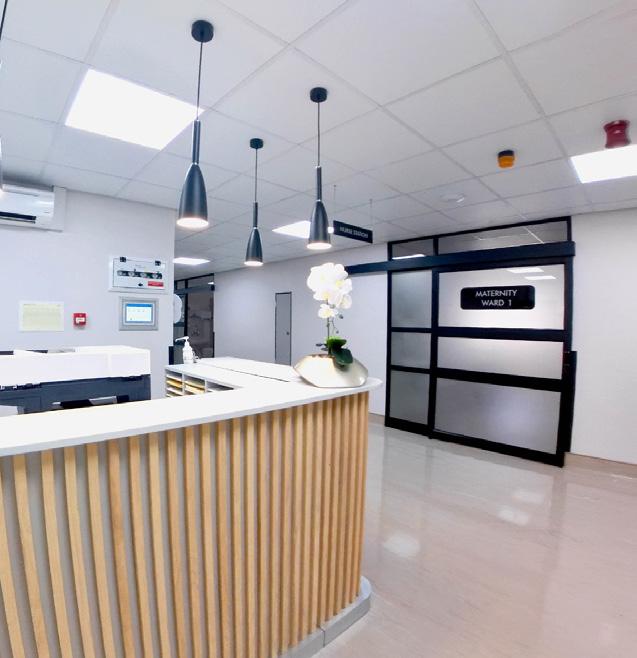
A New Era of Maternity Care at Melomed Mitchells Plain!
Melomed Mitchells Plain is proud to introduce our newly upgraded maternity unit – designed with you in mind!
Spacious & Modern – Thoughtfully designed for your comfort.
State-of-the-Art Equipment – Ensuring the highest level of care.

Beautifully Furnished – A warm, welcoming environment.
Melotainment iPad Devices – Enjoy entertainment at your fingertips.
Private Ward Option – Available on request for extra exclusivity.
With expert obstetricians, dedicated nursing staff, and a hospital group that truly cares, your journey into parenthood will be a special experience.
Made for the community – because we are here for you!
Melomed – A hospital group that cares.
Book your maternity tour today: 021 392 3126 www.melomed.co.za







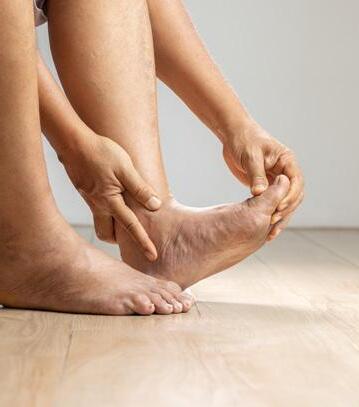



New & Now: Spice it up! The hot truth about spicy foods
Diagnosis: What is heart failure?
All About: Understanding the thyroid: A vital gland for overall health
Infographic: Top tips to keep you smiling!
How to...: Diabetic foot infections
Know it All: Allergic Rhinitis Nothing to sneeze at
Travel: Bucket-list stays all over South Africa
Mammograms: Your superpower for early detection
Recipe: Avocado quinoa salad
Dr Suvarnah Bodasingh
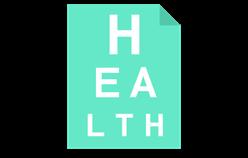
PUBLISHER: Health Bytes CC
CONTACT: christa@health-bytes.co.za
GRAPHIC DESIGNER: Marius Laubser TEL: 021 913 0504 INDEMNITY: The
SPICE IT UP!
Ever wondered if those viral spicy food challenges are harmful or healthy? Let's dish out the sizzling facts!
What happens when you bite into heat?
That fiery sensation you feel isn't actually a burn, it's your body being cleverly tricked! The culprit? A compound called capsaicin, found in chili peppers. It fools your brain into thinking you're experiencing real heat, triggering a cool-down response. That's why you might start sweating, get a red face, or reach for water!
The spicy benefits
Live longer: Research shows regular spicy food eaters might enjoy a longer life span.
Heart-friendly heat: Those chili peppers could help lower 'bad' cholesterol.
Weight management: Spicy foods may give your metabolism a natural boost.
Happy tummy: Surprisingly, moderate spice can actually help protect your stomach and improve gut health.
Sources:

THE HOT TRUTH ABOUT SPICY FOODS
Playing
it
safe
While most healthy people can handle the heat, remember:
• Start mild and build your tolerance gradually
• Skip the extreme challenges if you have digestive conditions
• Listen to your body – if it's too hot to handle, there's no shame in reaching for that glass of milk!
You don't need to tackle ghost peppers to reap the benefits. Adding a moderate kick to your meals can be both tasty and healthy. Just remember: spice should enhance your food, not send you to the ER!
Always consult your healthcare provider before making significant changes to your diet, especially if you have underlying health conditions.
www.uhhospitals.org/blog/articles/2022/06/spicy-food-challenges-harmful-or-healthy www.healthline.com/health/five-reasons-to-eat-spicy-foods

WHAT IS HEART FAILURE?
by Dr. Lifa Dhlamini
Heart failure is a serious condition that occurs when the heart cannot pump enough blood to meet the body's needs. Here's a public-friendly approach to understanding heart failure:
UNDERSTANDING HEART FAILURE
What it is
Heart failure means the heart is not functioning as well as it should. It can result from various conditions such as coronary artery disease, high blood pressure, or other heart conditions.
Symptoms
Common symptoms include shortness of breath, fatigue, swollen legs and ankles, and rapid or irregular heartbeat.
RISK FACTORS
Age
The risk increases as people get older.
Lifestyle
Poor diet, lack of exercise, smoking, and excessive alcohol consumption can contribute.
Health conditions
Conditions such as diabetes, obesity, and hypertension are significant risk factors.
PREVENTION
Heathy diet
Eat fruit, vegetables, whole grains, and lean proteins. Limit salt and saturated fats.
Regular exercise
Aim for at least 150 minutes of moderate aerobic activity each week.
Regular check-ups
Monitor blood pressure and cholesterol levels regularly.
ABOUT THE AUTHOR

LIVING WITH HEART FAILURE
Medication management
Take prescribed medications as directed and understand their purpose.
Lifestyle adjustments
Make necessary changes in diet, exercise, and daily routines to manage symptoms effectively.
Support systems
Engage family and friends for emotional support and consider joining support groups.

WHEN TO SEEK HELP
Be aware of worsening symptoms like increased shortness of breath, weight gain from fluid retention, or extreme fatigue and seek medical attention promptly.
EDUCATION AND AWARENESS
Support community programmes that raise awareness about heart health and encourage discussions about heart disease prevention.
By promoting awareness, encouraging healthy lifestyles and ensuring access to medical care, the public can play a significant role in managing and preventing heart failure.
DR. LIFA DHLAMINI
MBBCH(WITS) FCP(SA) MMED(WITS) CERT CARDIO(SA)
Dr. Lifa Dhlamini is a Cardiologist and currently practices at Melomed Richards Bay.
Tel: 035 791 5364
Email: admin@drldhlamini.co.za

UNDERSTANDING THE THYROID A VITAL GLAND FOR
OVERALL HEALTH
by Dr. Shakira Dawood
The thyroid gland is a small butterfly-shaped organ located at the base of the neck. It plays a crucial role in regulating numerous bodily functions. It produces hormones that influence metabolism, energy levels, heart rate, and body temperature. When the thyroid functions properly, it maintains a delicate hormonal balance essential for overall well-being.
PREVALENCE AND RISK FACTORS OF THYROID DISORDERS
Thyroid disorders are relatively common. Studies indicate that the prevalence of thyroid dysfunction in adults ranges from 1% to 10%, with higher rates observed in specific populations. Women, particularly those over 60, are more susceptible to thyroid issues. Risk factors include autoimmune diseases, iodine deficiency or excess, certain medications, and a family history of thyroid problems.
CONSEQUENCES OF UNTREATED HYPERTHYROIDISM
If left untreated, hyperthyroidism can lead to serious complications such as heart problems including atrial fibrillation (irregular heart beat) and heart failure, brittle bones (osteoporosis), and a life-threatening condition called thyroid storm, characterized by fever, rapid heartbeat, and confusion.
HYPERTHYROIDISM: WHEN THE THYROID IS OVERACTIVE
Hyperthyroidism occurs when the thyroid gland produces excessive hormones, accelerating the body's metabolism. Symptoms can include rapid heartbeat, weight loss, increased appetite, anxiety, tremors, and heat intolerance. Graves' disease is a common cause, but other conditions like toxic nodular goiter and thyroiditis can also lead to hyperthyroidism.
HYPOTHYROIDISM: WHEN THE THYROID IS UNDER ACTIVE
Hypothyroidism arises when the thyroid doesn't produce enough hormones, leading to a slowed metabolism. Common symptoms include fatigue, weight gain, cold intolerance, constipation, dry skin, depression, and slowed heart rate. Hashimoto's thyroiditis, an autoimmune condition, is a prevalent cause.
Diagnosing thyroid disorders typically involves blood tests measuring levels of thyroid hormones (T3 and T4) and thyroidstimulating hormone (TSH). Imaging studies like ultrasounds or radioactive iodine scans may be used for further evaluation.
Treatment varies based on the specific disorder:
• Hyperthyroidism: Managed with antithyroid medications, radioactive iodine therapy, or surgery.
• Hypothyroidism: Treated with daily thyroid hormone replacement therapy.
Regular monitoring is crucial, as early detection and treatment of thyroid disorders can prevent complications and improve quality of life. DIAGNOSTICS AND TREATMENT
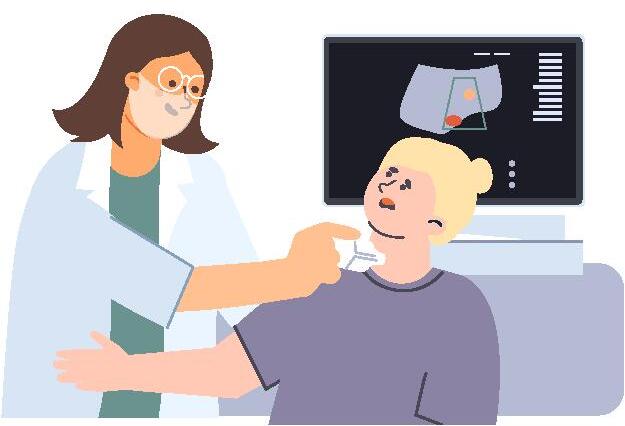
CONCLUSION
While not all thyroid disorders are preventable, certain measures can reduce risk:
• Adequate iodine intake: Ensuring sufficient iodine in the diet supports healthy thyroid function.
• Regular check-ups: Routine medical evaluations can detect thyroid issues early, especially in high-risk groups.
• Awareness of symptoms: Being vigilant about symptoms like unexplained weight changes, fatigue, or mood disturbances can prompt timely medical attention.
The thyroid gland significantly influences overall health. Understanding its function, recognizing symptoms of dysfunction, and seeking appropriate medical care are vital steps in maintaining well-being. Regular consultations with healthcare providers ensure early detection and effective management of thyroid-related conditions.
ABOUT THE AUTHOR

DR. SHAKIRA DAWOOD
MBChB (Stell), DipPec (SA), FCP (SA), Mmed
Dr. Shakira Dawood is a specialist physician and currently practices at Melomed Mitchells Plain.
Tel: 021 110 5554
Email: info.drsdawood@gmail.com

TOP TIPS TO KEEP YOU SMILING!
by Dr. Shamima Bhorat
Healthy teeth and gums helps you smile with confidence. Whether it’s in the workplace, at school or at social gatherings a beautiful smile has the power to create feelings of warmth, trust and friendliness.
These are a few tips to keep your teeth and gums healthy so that you keep on smiling:
Brush teeth twice a day for two minutes. Brush before breakfast as overnight bacteria accumulate on your teeth causing harm. Brushing with a fluoride containing toothpaste before breakfast provides protection against acids in food and drink.
Floss before brushing your teeth.
Floss your teeth every day.
If you don’t floss 40% of your tooth is NOT being cleaned as the toothbrush is unable to get in between the teeth. Flossing removes food and plaque from between the teeth and along the gum line.
Use only a pea size amount of toothpaste on your toothbrush. Using too much toothpaste especially in children can lead to excess fluoride consumption which can causes white spots on the teeth (fluorosis)
It is better to spit than rinse out toothpaste. This maximises the benefits of the fluoride of the toothpaste which prevents cavities. 2X
Place your toothbrush at a 45 degree angle to your gums and move it gently in a circular motion. Little circles round and round. Scrubbing your teeth causes your gums to recede resulting in sensitive teeth.
Brush your tongue!
Brushing one’s tongue prevents bad breath, removes bacteria and allows your taste buds to function better.
Brush your teeth before bed
We eat throughout the day and food particles get stuck to our teeth. At night our saliva production is less. Saliva naturally lubricates and cleans our teeth. Brushing decreases the bacteria in the mouth which prevents tooth decay and bad breath.
Change your toothbrush every 3 to 4 months. A worn - out toothbrush is less effective at cleaning your teeth.
Don’t share your toothbrush with anyone. You spread germs to the next person.
Choose a toothbrush head size that can get to all the surfaces of your teeth.
For most people choosing a soft- bristle brush is the best choice. Brushing too hard can wear down the enamel resulting in sensitive teeth.
Visit the dentist every 6 months for routine check ups.
Take your child regularly to visit the dentist from a young age. Children are more comfortable with dentists if they attend sessions from an early age as trust is built.

Don’t smoke
Smoking discolours our teeth, causes gum disease, increases the risk of cancer of the mouth and throat , causes bad breath and delays healing after an extraction or gum surgery.
Avoid food and drink that stain your teeth. Tea, coffee, red wine, soya sauce, dark vegetables, tumeric and colas all stain your teeth. Try drinking out of a metal straw to minimise their contact with your teeth.
Choose fruits and vegetables like apples and carrots over sugary foods. A healthy diet is essential for good oral health. Water or plain milk is the best choice of drink.
The power of a smile extends beyond ones physical beauty.
A smile has the potential to positively impact our self confidence and overall quality of life. Let us embrace our smiles and make dental health a priority for ourselves and our loved ones. Schedule that dental check up and look after your oral health.
ABOUT THE AUTHOR

DR. SHAMIMA BHORAT BChD(Stell)
Dr. Bhorat is a Dentist and currently practices at Melomed Tokai, Melomed Gatesville and Melomed Bellville.
Tel: 021 712 0689 | 021 633 5562 | 021 948 6350
Email: drsbhorat@gmail.com

DIABETIC FOOT INFECTIONS
by Dr. Mdumo Moshwana
Diabetic foot infection is an infection of the skin or even bone that is often associated with dysfunction in the nerves or blood supply in diabetic patients. It is often, but not always, preceded by a diabetic foot ulceration.
BACKGROUND
The incidence of diabetes worldwide is projected to increase by 55% over the next 20 years, so this problem is only going to get worse.
Treating diabetic foot infections is not easy as the blood flow is reduced and the antibiotics usually cannot reach the diseased area. In many patients with diabetes mellitus, a foot infection progresses fast and the cure can take a lot longer compared to a non diabetic, the need for emergent review by a Doctor is essential.
Appropriate footwear is also essential for all patients with diabetes mellitus. Trauma or pressure from ill-fitting shoes can quickly compromise blood flow and predispose the patient to infection.
HOW DOES IT HAPPEN?
Diabetic foot infections are often associated with weakness in the nerves thus leading to the patient not feeling when they are hurt or injured. Lack of blood flow to the foot also contributes to risk of a foot wound becoming infected.
WHAT TO LOOK FOR?
Note the presence of classic signs of inflammation (redness, warmth, swelling, tenderness, pain) or purulent secretions and foul odor. The presence of two or more of these signs is possibly shows diabetic foot infection.
Grade 0 no break in skin
WHAT TO DO?
Grade 1 superficial ulcer
Grade 2 exposed tendons, joints
Grade 3 exposed bones and/or abscess/ osteomyelitis
Consult your doctor who may advice on a variety of options or refer you to another member of the health system depending on how serious your infection is, such as reducing the load on your foot, how to take care of your foot and control of your sugar levels.
WHAT DO SURGEONS DO WHEN REFERRED TO?
A surgeon needs to be consulted for all cases of moderate and severe diabetic foot infections. Many patients require surgical intervention, varying from local incision and debridement to high-level amputation, depending on the severity of infection and degree of peripheral vascular disease.
WHY DO SURGEONS DO WHAT THEY DO?
The goal of surgery is to control the infection while preserving maximal function and quality of life and the level of amputation is determined by the extent and severity of the infection.
Determining whether to pursue amputation versus medical therapy alone or combined with local incision and debridement is complex and should be made on an individual case-bycase basis, considering the site and severity of infection as well as patient preferences.
Factors favoring amputation include continous infection, involvement of the bone despite adequate antibiotic therapy. >>

WHAT DO YOU DO?
Take care of the wound with the help of a podiatrist and wound care nurse, psychiatric support is also quiet essential as the surgical intervention can be a life changing process. The wound bed should be managed to promote healing and should be protected from further infection.
Comply with your medication to improve your glucose control.
Remember prevention is better then cure. Lets take care of our health including what keeps us standing. Our Feet!

ABOUT THE AUTHOR

DR. MDUMO MOSHWANA MBCHB (MEDUNSA), FCS (SA), MMED (SMU)
Dr. Mdumo Moshwana is a General Surgeon and currently practices at Melomed Tokai and Melomed Mitchells Plain.
Tel: 021 110 5083
Email: surgeon@drmoshwana.co.za admin@drmoshwana.co.za
Allergic Rhinitis
Nothing to sneeze at
by Dr. Winile Makhaye

If there's one thing that'll ruin those warm, sunny days it's allergies. Understanding what allergic rhinitis is, how it's diagnosed, and how to keep allergies under control can help you make the most of your summer.
WHAT IS ALLERGIC RHINITIS?
Allergic rhinitis (AR), also known as hay fever, is a reaction that happens when your nose reacts to something you're allergic to (allergens). When these airborne triggers like pollen, dust, and other allergens, enter your nose, your body's immune system responds by causing inflammation in the nasal passages. Allergies often worsen during certain seasons or with changes in the weather.
Common symptoms include:
• A runny or stuffy nose
• Frequent sneezing
• Itchy nose
• Post-nasal drip (mucus running down the back of your throat)
Although this condition is commonly called hay fever, it doesn't usually cause a fever. Nasal Nine out of ten people with allergic rhinitis say that having a blocked, stuffy nose is their most bothersome symptom. This can affect their daily activities and quality of life.
The Allergic Rhinitis and its Impact on Asthma (ARIA) expert committee workshop reclassified AR, based on:
1. The duration of symptoms as:
• Intermittent: Intermittent symptoms are symptoms lasting for less than 4 days of the week or less than 4 weeks per year.
• Persistent: Persistent symptoms are symptoms lasting for more than 4 days per week and more than 4 weeks per year.
2. The effect on the patient’s quality of life as:
• Mild: Mild AR does not affect the patient’s quality of life.
• Moderate-severe: Moderate-severe AR causes one or more of the following:
- sleep disturbance
- impairment of daily activities leisure and/or sport
- impairment of work or school
- troublesome symptoms. >>
HOW COMMON IS ALLERGIC RHINITIS?
In South Africa, many people experience allergic rhinitis throughout the year (persistent), not just during certain seasons. Most people who have it deal with moderate to severe symptoms that can affect their daily lives.
HOW DO DOCTORS DIAGNOSE IT?
Your doctor will:
1. Listen to your symptoms and medical history
2. Look for common signs, such as:
- Changes in facial appearance (e.g. the nasal crease: A visible horizontal
- line across the bridge of the nose caused by the repeated rubbing motion).
- Swollen, pale, or purplish tissue (inferior turbinates) inside your nose
- Clear nasal discharge
3. Recommend allergy tests if needed
4. These tests might include:
5. Skin-prick tests (small, quick tests on your arm)
6. Blood tests to check for specific allergies
TREATMENT OPTIONS
Your doctor will create a treatment plan that may include:
1. Learning more about your condition
2. Avoiding things that trigger your allergies (allergen avoidance).
3. Taking appropriate medications
4. Considering allergy shots (immunotherapy) if needed
Your doctor will focus on testing for allergens common in your area, making the treatment more relevant to where you live.

HOW TO STOP THE SNEEZING
Getting better starts with knowing more about your allergies. When you understand what causes your symptoms and how your treatment works, you're more likely to find relief. Your doctor will work with you to create a plan that fits your lifestyle.
Medication
There are several ways to manage allergic rhinitis: Over-the-counter and prescription medications, including:
• Antihistamine tablets
• Nasal sprays (including steroid sprays)
• Decongestants
• Other prescribed medications
Nasal sprays work by reducing swelling in your nose, which helps prevent allergy triggers from causing symptoms. Remember: these medications only work while you're taking them, so it's important to use them regularly if you have year-round allergies.
Making the right choice
Your doctor will consider several factors when recommending treatment:
• How well the medicine works
• Safety and possible side effects
• Cost and what your medical aid covers
• What works best for your lifestyle
• How severe your symptoms are
• Other health conditions you may have
Nasal sprays work by reducing swelling in your nose, which helps prevent allergy triggers from causing symptoms. Remember: these medications only work while you're taking them, so it's important to use them regularly if you have year-round allergies.
Important tips to remember:
Your doctor will consider several factors when recommending treatment:
• Using more medication isn't always the answer
• Regular use of prescribed medication works better than stopping and starting
• The best approach is to identify your triggers and avoid them when possible
REDUCING YOUR EXPOSURE TO ALLERGY TRIGGERS
Once you know what causes your allergies (through allergy testing), you can take steps to avoid these triggers. While avoiding triggers alone might not completely stop your symptoms, it's still an important part of your overall treatment plan.
HELPFUL TIPS FOR MANAGING YOUR ENVIRONMENT
Your doctor may suggest ways to reduce your contact with things that trigger your allergies. Think of this as one tool in your allergy-fighting toolkit – it works best when combined with other treatments your doctor recommends. >>
"The best way to combat allergies is to find out exactly what's sparking them, take charge, and reduce your exposure to the allergen when possible."
MANAGING COMMON INDOOR AND OUTDOOR ALLERGENS
House-dust mites
There are a number of measures that can be taken to reduce house-dust mite exposure including:
• Encasing the mattress, pillows, and duvet in impermeable covers
• Washing all bedding in hot water
• Replacing carpets with tiles or wooden flooring or treating carpets with acaricides
• Minimising the use of upholstered furniture
• Keeping dust-accumulating objects in cupboards
• Using a vacuum cleaner with a HEPA filter
• Washing curtains in hot water or replacing curtains with blinds
• Washing soft toys in hot water or freezing them.
Dealing with mould
If you're allergic to mould, taking steps to reduce it in your home can help. Here are some tips:
• Fix any water leaks promptly
• Use dehumidifiers in damp areas
• Keep bathrooms well-ventilated
• Clean visible mould with appropriate cleaners
• Check dark, humid spaces regularly
Controlling cockroaches
If you're allergic to cockroaches, getting rid of them is important but can be challenging. Here's what you can do:
• Seal food in airtight containers
• Clean up crumbs and spills right away
• Fix water leaks that attract them
• Keep your home dry and clean
• Work with pest control professionals
• Stay on top of the problem to prevent them from coming back
For both mould and cockroach problems, it's often helpful to work with professionals who can provide long-term solutions.
Living with pet allergies
Many people discover they're allergic to their pets but don't want to give them up. Pet allergens come from animals' saliva and skin oils, not just their fur or dander. While removing the pet from your home is the most effective solution, we understand this isn't always possible for pet lovers. If you're keeping your furry friend, try these tips to reduce allergens:
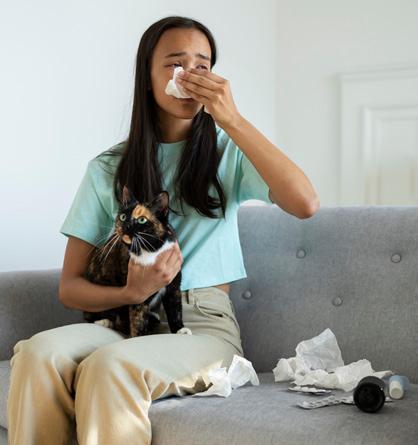
Keep clean zones
• Make your bedroom a pet-free area
• Keep pets in rooms without carpets
• Vacuum regularly with a HEPA-filter vacuum
• Increase airflow by opening windows when weather permits Pet care tips
• Bath your dog or cat every 1-2 weeks
- Note: While this helps, the effect is temporary
• Brush pets outdoors to reduce indoor allergens
• Wash pet beds regularly
MANAGING POLLEN ALLERGIES
Pollen allergies can be challenging, but with good planning, you can reduce your exposure and manage your symptoms better. Here's how:
Before pollen season
• Start your allergy medication early, before symptoms begin
• Get to know which trees in your area trigger your allergies
• Install HEPA air filters in main living areas
Track and plan your day
• Check weekly pollen counts at www.pollencount.co.za
• Plan outdoor activities when pollen is lowest (late afternoon to early evening)
• Avoid morning outdoor activities when pollen counts are highest
Smart home tips
• Keep windows closed during peak pollen hours (morning to midday)
• Use your tumble dryer instead of hanging laundry outside
• Run air filters in bedrooms and living spaces
After being outdoors
• Change your clothes after outdoor activities
• Shower to wash off pollen from skin and hair
• Avoid tracking pollen through your home
When to be extra careful
• Skip lawn mowing and leaf raking when pollen counts are high
• Watch out for windy days that can stir up more pollen
• Be especially careful during your problem trees' peak seasons
Work-related allergies
If you're allergic to something at work:
• Talk to your doctor and employer
• Look for ways to minimize exposure
• Consider changing work areas if possible
• Follow workplace safety guidelines
While these steps help reduce exposure, they work best when combined with your prescribed allergy treatments. Talk to your doctor about creating a complete management plan that's right for you.
WHEN SHOULD YOU SEE YOUR DOCTOR?
Make an appointment with your doctor if:
• Your allergy symptoms don't improve with over-thecounter medicines
• Your allergies interfere with daily activities like:
- Work or school performance
- Sleep quality
- Outdoor activities
- Exercise
• You have ongoing nasal congestion or sinus problems
• Your allergies trigger asthma symptoms
• You're experiencing new or worsening symptoms
While these steps help reduce exposure, they work best when combined with your prescribed allergy treatments. Talk to your doctor about creating a complete management plan that's right for you.
ABOUT THE AUTHOR

DR. WINILE PATRICIA MAKHAYE MBChB (UKZN) FCORL (SA) Mmed (Otorhinolaryngology)
Dr. Winile Makhaye is an Otolaryngologist currently practising at Melomed Mitchells Plain.
Tel: 021 110 5950
Email: entdrmakhaye@gmail.com

BUCKET-LIST STAYS ALL OVER SOUTH AFRICA


Get ready to add some incredible spots to your South African bucket list! These ten unique stays offer the perfect blend of adventure, luxury, and serenity, providing unforgettable getaways that stand out from the rest.
BOOMHUIS FARM STAY
GEORGE, WESTERN CAPE
Ready for a peaceful escape? Boomhuis Farm Stay is a gorgeous, off-the-grid cabin nestled in the trees at the foot of the Outeniqua Mountains. This beautiful stay is a romantic getaway that will make couples fall in love all over again. With a cosy fireplace, an undercover patio with a braai and a woodfired hot tub, you can’t help but forget about time and troubles. The more adventurous guests can take on hiking and mountain biking on the farm. It's a great place to recharge your batteries and get a new lease on life.
THE PODS THABAZIMBI, LIMPOPO
For an authentic and exclusive Bushveld experience, look no further than The Pods at Thaba Entle Private Boutique Game Lodge. These modern and cosy wooden container homes offer incredible bushveld views, and with a private patio and a woodfired hot tub, you can unwind in style while surrounded by the sights and sounds of nature. It's a great choice for those who want to disconnect from the hustle and bustle and embrace a more serene way of life. Guests can also book venues on the farm at an extra cost, and the game lodge offers pre-ordered food boxes, pre-ordered picnic baskets, E-bike hiring, game drives with drinks and walking trails.
NAMBITI HILLS LODGE LADYSMITH, KWAZULU-NATAL
If you're a fan of the Big Five, then Nambiti Hills Private Game Lodge should be at the top of your list! This lodge offers a sophisticated and authentic African safari experience. Nestled in the spectacular Nambiti Game Reserve, this lodge includes breakfast and dinner and offers two daily game drives. Furthermore, you can relax on the wooden deck with a heated pool, or just unwind in your luxurious suite. There are ten luxury suites and one honeymoon suite, and each suite features a private viewing deck, air-conditioning that can be converted to a heater, a fully stocked mini-bar, and sleeper couches are provided for children.




CEDERBERG RIDGE WILDERNESS LODGE CLANWILLIAM, WESTERN CAPE
Situated on a beautiful farm with magnificent views of the Cederberg Mountains, Cederberg Ridge Wilderness Lodge is a luxurious and adventurous escape. This lodge is a true wilderness retreat, with plenty of activities to keep you busy, from guided walks and rock art tours to mountain biking and full-day excursions. After a day of exploring, you can relax in your uniquely decorated, air-conditioned room and take in the stunning mountain views. It's a fantastic spot for those who want to be in the lap of luxury while still being one with nature.
DE NEST - CLEAR GLASS TREE CABIN
MONTAGU, WESTERN CAPE
Want to get in touch with nature without leaving behind any of life's comforts? Then the De Nest - Clear Glass Tree Cabin is the one for you! This romantic, transparent cabin is the perfect escape for lovebirds and honeymooners. With its unique, see-through walls, you can feel like you're one with nature, all while being snug and warm inside. You can spend your day listening to the sounds of birdsong and enjoying the morning light filtering through the trees, and once the sun goes down, you can enjoy an outdoor bath under the stars. It's a truly magical experience!
OCEAN DOME
STORMS RIVER, EASTERN CAPE
Imagine waking up to the sounds of nature in your very own dome-shaped glamping tent! The Dome, located in the breathtaking Misty Mountain Reserve, is a game-changer when it comes to unique stays. It's an intimate and charming retreat that's perfect for a special getaway. With a private deck, an outdoor bathroom, and access to a swimming pool and restaurant, this is the ideal spot for lovebirds to get away from it all and make memories that will last a lifetime.
KLEIN-HANGKLIP
ROOI ELS, WESTERN CAPE
Nestled just outside the picturesque coastal village of Rooi Els, Klein-Hangklip is an eco-friendly cabin full of character. This self-catering gem is designed for a peaceful escape, complete with a cosy fireplace, a fully-equipped kitchen, and a living area that opens up to a stunning wooden deck with panoramic views. You can relax in the wood-fired hot tub or on one of the hammocks, while the boma area is perfect for enjoying a refreshing drink. This is the place to be if you're looking for a tranquil and off-the-grid coastal getaway.
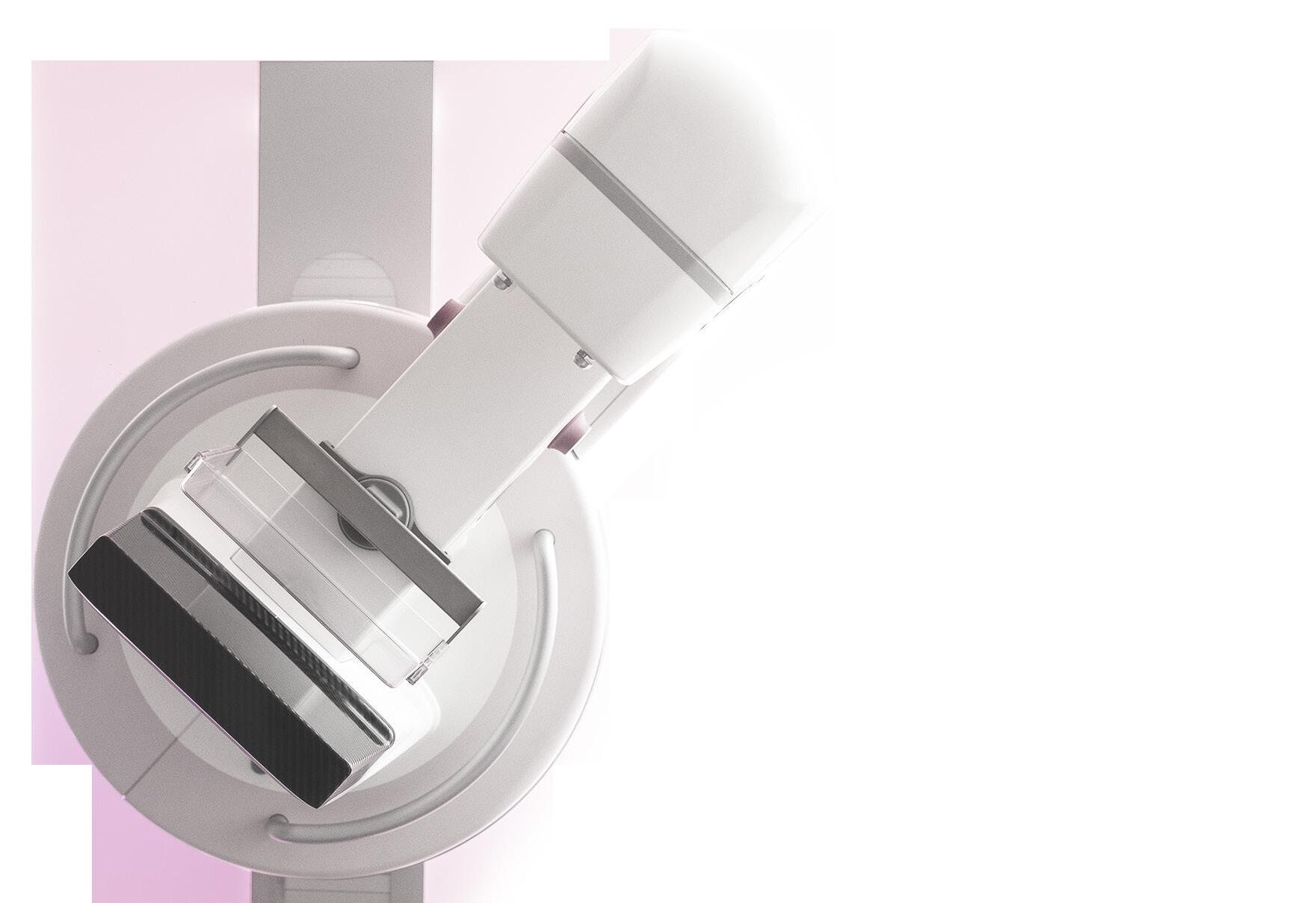

YOUR SUPERPOWER FOR EARLY DETECTION Mammograms
When it comes to breast cancer, early detection is your greatest ally. A mammogram – a specialised low-dose X-ray of the breast – can identify abnormalities long before they can be felt or seen. In fact, mammograms are often able to detect breast cancer up to two years before a lump can be picked up during a self-exam or clinical check.
This is why regular screenings are so important. Detecting cancer early doesn’t just save lives – it can also make treatment less invasive and improve recovery outcomes.
WHY MAMMOGRAMS MATTER
The Cancer Association of South Africa (CANSA) highlights that breast cancer is the most common cancer among South African women. Screening plays a critical role in reducing mortality rates:
1. Lives saved, treatments simplified: International studies show that regular screening mammography reduces deaths from breast cancer by 30% to 40%. When cancer is found early, patients are less likely to need aggressive treatments like chemotherapy.
2. When to start: CANSA recommends that women begin annual screenings from age 40 to 54, and then transition to screenings every two years from age 55 onwards.
3. High-risk women: Those with a family history of breast cancer may need to start screenings earlier — often 10 years before the age at which their relative was diagnosed.
4. Younger women: Even before 40, women should have regular clinical breast exams and risk assessments, particularly if they have risk factors.
Simply put: early detection through mammography is one of the most powerful tools women have in the fight against breast cancer.
A mammogram only takes a short time, but the peace of mind it offers is invaluable. Regular screenings empower women to take control of their health and ensure that, if something is found, it is treated at the earliest possible stage.
Self-checks and being familiar with your body remain important, but they are not a substitute for mammograms. The combination of personal awareness, medical guidance, and regular imaging provides the strongest defence.
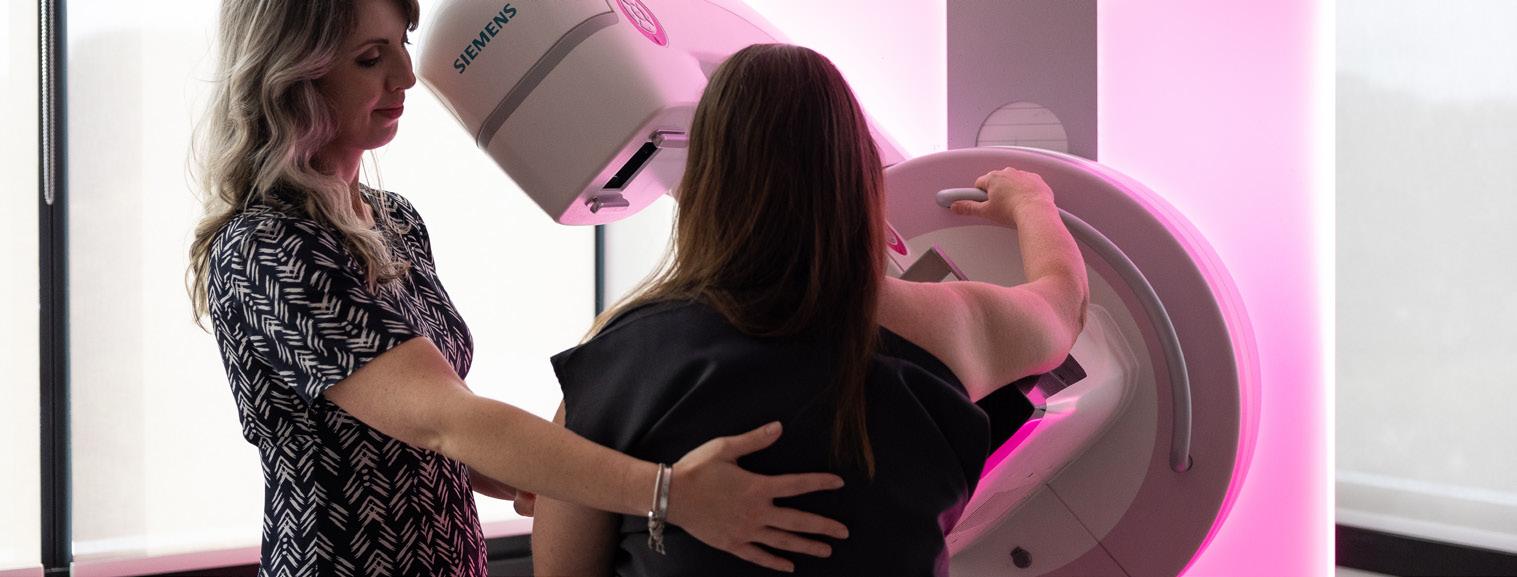
MORTON & PARTNERS: SUPPORTING BREAST CANCER AWARENESS
At Morton & Partners Radiologists, we believe cost should never be a barrier to care. In support of Breast Cancer Awareness, we are offering a 30% discount on mammograms for all private-paying patients.
Valid from 01 October 2025 to 15 November 2025
This initiative is part of our ongoing commitment to raising awareness and encouraging women to prioritise their breast health.
HOW TO BOOK YOUR SCREENING
Making your appointment is simple:
• Contact your nearest Morton & Partners branch directly, or
• Request an appointment online through our website on www.morton.co.za
TAKE ACTION TODAY
Your health is your most valuable asset. A mammogram could make all the difference – for you, your loved ones, and your future. By booking your screening, you’re not just taking charge of your own health; you’re helping spread awareness and inspiring others to do the same.
This Breast Cancer Awareness Month, put yourself first. Your health matters.
AVOCADO QUINOA SALAD
Prep Time: 15 minutes | Total Time:
POWER UP YOUR PLATE WITH THIS NUTRIENT-RICH COMBO!
Every bowl brings together:
• Creamy avocado loaded with healthy fats
• Protein-packed quinoa
• Zesty homemade lemon vinaigrette
A perfect blend of flavours and textures that's as nutritious as it is delicious!
INGREDIENTS
Salads
• 1 cup uncooked quinoa
• 230g fresh cherry tomatoes, halved
• 1 large cucumber, chopped
• 1/4 cup red onion, finely chopped
• 150g fresh spinach, roughly chopped
• 2 large ripe avocados, pit removed and chopped
• 1/4 of 1 bunch fresh coriander, optional and to taste
• 1/3 cup Feta Cheese, optional and to taste
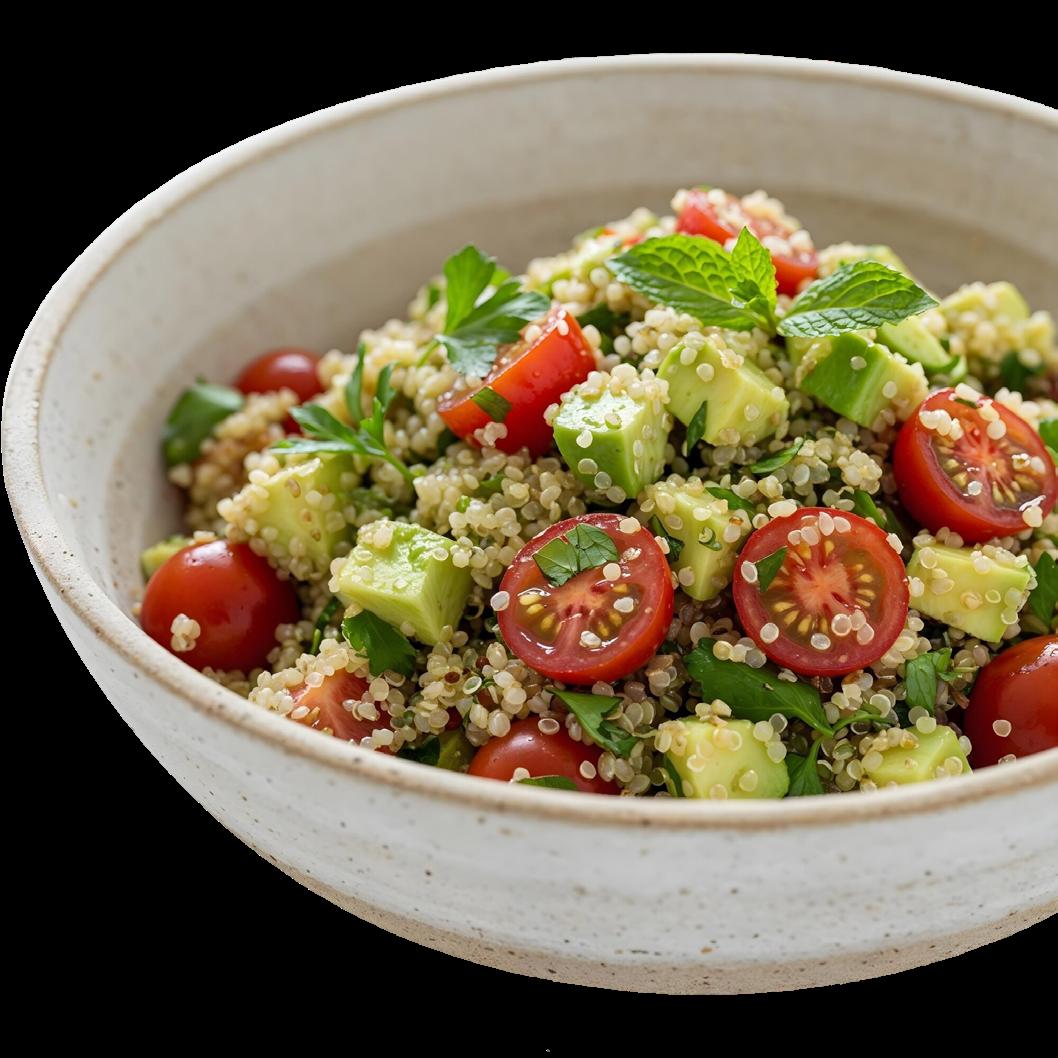
Dressing
• 4 tablespoons brown vinegar
• 2 tablespoons Dijon mustard, do not use regular mustard
• 1 teaspoon dried oregano
• 1 clove garlic, minced
• ½ cup olive oil
• 1 lemon (2-3 tablespoons fresh lemon juice)
• Salt and pepper
AN AVOCADO A DAY KEEPS THE DOCTOR AWAY
We know that avocados are an excellent food choice, packed with nutrients, heart-healthy, and tasty. But do you know the following facts about versatile avocados? Take the TRUE or FALSE quiz.
Avocados are not fattening.
TRUE – Half an avocado contains about 160 calories (672kJ). This is 20 calories (84kJ) less than a small bag of peanuts and slightly lower than a slice of cheddar cheese. Avocados are full of healthy, beneficial fats that help to keep you full and satiated. Eating healthy fats supports skin health, enhances the absorption of fat-soluble vitamins, minerals, and other nutrients, and may even help boost the immune system.
METHOD:
1. Cook the quinoa according to package directions. Fluff and set aside to cool.
2. Meanwhile, prep the dressing. Whisk the brown vinegar, Dijon mustard, oregano, garlic, 1/2 teaspoon salt (or to taste), and 1/4 teaspoon pepper (or to taste) together in a small bowl. Slowly add in the olive oil into the vinegar mixture while whisking briskly. Whisk in the lemon juice. Pour into a jar and store in the fridge while prepping the vegetables.
3. Prep the veggies: Halve the cherry tomatoes, chop the cucumber (peel if desired, we leave the peel on), finely chop a quarter of a red onion, roughly chop fresh spinach, remove the pits and chop the avocados. Finely chop the coriander if desired.
TOP TIPS
You can tell how ripe an avocado is by gently pressing into the skin. If the avocado is firm and does not budge, you will need to let it ripen for a few days before consuming. Soft avocados make great guacamole or dip, while firmer avocados are great for slicing and adding to a salad or a sandwich. To speed up the ripening process, place an avocado in a paper bag with a banana.
Avocados are high in cholesterol.
4. In a large bowl, add in all the prepped veggies and quinoa. Remove the dressing from the fridge and shake it well and then pour over the salad*. Toss the salad and then top with feta cheese if desired.
5. Enjoy immediately.
Recipe notes
If you aren't planning on finishing this salad all in one day, rather keep the dressing separate from the salad and only dressing what you'll be eating. Also, only prep the amount of avocados to what you'll be eating that day (so if you'll have leftovers, only add one avocado and add the other one the next day).
Quick tips:
• Spread avocado on toast in the morning instead of butter.
• Use avocado instead of mayonnaise in chicken or egg salad, or as a spread on a sandwich.
• The soft, creamy texture of an avocado and its mild taste make it a perfect first food for babies.
FALSE – Avocados are rich in healthy monounsaturated fatty acids, an essential element for lowering LDL cholesterol (bad cholesterol) and triglyceride levels and does not contain cholesterol.
Avocados contain few vitamins and minerals.
FALSE – Avocados are a naturally nutrient-dense food and contain nearly 20 vitamins and minerals.
Avocados are also known as alligator pears.
TRUE – Avocados are also known as alligator pears - because of its pear-like shape and green rough skin – or butter fruit.
MEET ONE OF OUR DEDICATED
SPECIALISTS
DR SUVARNAH BODASINGH
Tel: 035 791 5438 | 081 039 2173 | Email: drsbodasingh@gmail.com

DR. BODASINGH IS AN OBSTETRICIAN/GYNAECOLOGIST AND CURRENTLY PRACTICES AT MELOMED RICHARDS BAY.




WHAT IS YOUR DEFINITION OF “HAPPINESS”?
Finding satisfaction and joy in the simple things in life; loyal friends, tight hugs and roaring laughter. We get lost in the glitz and glamour of society's standards and forget how important it is to appreciate what we have. We create our own happiness, which is unique to each individual, its a feeling not a thing.
WHERE DO YOU MOST WANT TO TRAVEL, BUT HAVE NEVER BEEN?
Nothern Lights or The Great Migration.
WHAT’S THE MOST FUN YOU’VE HAD THIS MONTH / YEAR?
Traveling with my eldest son. We were fortunate enough to see the great tombs and pyramids in Egypt, swimming in the thermal pools at Pamukkale, and setting flight on a hot air balloon in Cappadocia, Turkey. Also priviliged enough to have gone to the Hungarian F1 Grand Prix, what an experience.
WHY DID YOU CHOOSE YOUR PROFESSION?
I think this is the most joyous part of medicine. As an obstetritian and gynaecologist we help bring in life on to this earth. I found it to be one of the happier disciplines. It also marries the non-surgical and surgical aspects of medicine.
WHAT DO YOU LIKE TO DO IN YOUR SPARE TIME?
I enjoy anything artistic. It allows you to express and show off a piece of you. I enjoy the process of creating your own pottery, from its raw form to the final product. Mosaics are one of my favourites, creating art work from cracked or cut pieces of glass intrigues me.
WHICH THREE SONGS WOULD YOU LISTEN TO FOR THE REST OF YOUR LIFE, IF YOU HAD TO PICK?
Fight song - Rachel Platten; Perfect - Ed Sheeren; Diamonds - Rihana.
WHAT IS YOUR GREATEST HOPE?
To succeed in all that I set out to do.

EMPATHY, EXPERTISE, AND EXCELLENCE: Unveiling the Leading Obstetric and Gynaecological Team at Melomed Tokai!

Dr. Aneeqah Hendricks
Bringing New Life into the World
021 712 2691

Dr. Matshidiso Agnes Tisane Holistic Care for Women’s Health
021 023 2046

Nurturing Life with Expertise & Passion
secretary@aneeqahhendricks.co.za
Meet Dr. Aneeqah Hendricks, a compassionate Gynaecologist and Obstetrician who finds immense joy in welcoming new life into the world. With a focus on achieving positive outcomes, Dr. Hendricks not only provides expert medical care but also connects on a personal level, drawing from her experience as a mother herself.
Dedicated to comprehensive patient care, Dr. Hendricks considers every aspect of her patients’ well-being, including socioeconomic and cultural backgrounds. She takes the time to understand individual needs, offering clear explanations and support throughout the journey. Beyond the hospital walls, Dr. Hendricks enjoys exploring the world through travel, indulging in movies, and cherishing quality moments with her own family.
Specialising in vaginal surgery, adolescent gynaecology, hormonal disorders, and reproductive endocrinology, Dr. Hendricks is your partner in women’s health at every stage. From family planning to menopause, she ensures her patients receive the best care, including surgeries, screenings, and personalized attention.
drtisanesecretary@gmail.com
Introducing Dr. Tisane, a dedicated Gynaecologist and Obstetrician committed to the holistic well-being of women. As an Obstetrician, she brings vast experience in maternal and fetal care, guiding expectant mothers through the beautiful journey of pregnancy. Dr. Tisane believes in building strong patient relationships, ensuring effective communication, and providing comprehensive care with a personal touch.
Beyond her medical expertise, Dr. finds joy in the outdoors and values quality time with her own family. With a passion for helping mothers navigate the challenges of newborn care, she strives to make each patient feel heard and supported.
In addition, to her passion and expertise in Obstetrics, she also specialises in addressing gynaecological issues such as abnormal bleeding, infertility, and recurrent miscarriages, Dr. also conducts crucial screenings for cervical and breast cancer.
drtmog@gmail.com
Meet Dr. Tladiso Motsema, an experienced Obstetrician and Gynaecologist dedicated to nurturing life with a blend of medical and surgical expertise. Dr. Motsema’s journey in Obstetrics and Gynaecology started in 2011, driven by a passion for integrated patient care.
With a wealth of experience gained through a Diploma in Obstetrics and a fellowship in 2016, Dr. Motsema’s commitment extends beyond clinical practice. He takes pride in teaching and guiding future healthcare professionals, ensuring the legacy of compassionate and knowledgeable practitioners.
Patient care and wellness are at the forefront of Dr. Motsema’s priorities. From general obstetrics and gynaecology to contraception and family planning, he contributes to the community’s health, emphasizing the importance of a healthy mother for a healthy baby.
Join Dr. Motsema on the journey of wellrounded women’s healthcare.
HEARTHEALTH
Smoking, high blood press re, high cholesterol and diabetes are some of the common risk factors for de eloping heart condi ons. While o r doctor is the best g ide to help o iden f o r risk of heart disease, it is important to kno that some heart related blood tests hold a lot of importance to diagnose and manage heart condi ons.
Lipid profile test
Also called cholesterol test, this test meas res the le els of fats in o r blood and can point o t to ards o r risk of ha ing a heart a ack, stroke or other heart disease. This test t picall incl des meas rements of ario s other n mbers:
· Total cholesterol: This refers to the amo nt of cholesterol in o r blood. An increased le el of total cholesterol increases o r risk of heart disease.
· High-densit lipoprotein (HDL) cholesterol: Also called the "good" cholesterol, it helps keep arteries open and o r blood to flo more freel .
· Lo -densit lipoprotein (LDL) cholesterol: Also called the "bad" cholesterol, too m ch LDL cholesterol in o r blood can lead to plaq e deposi on in o r blood essels, and res lts in red ced blood flo This plaq e b ild- p ma r pt re and ca se major heart and blood essel problems.
· Trigl cerides: These are another t pe of fat in the blood, high le els of hich can raise o r risk of heart disease.
Natri re c pep des test
Brain natri re c pep de is a protein that o r heart and blood essels make to help o r bod eliminate fl ids, rela blood essels and e crete sodi m into o r rine. When o r heart gets damaged, le els of BNP entering o r blood increases.
Different people can ha e different al es for normal BNP le els since it can ar based on the age, gender, and being o er eight.
Troponin (T) Test for Heart A ack
Troponin (or cardiac troponin) is a t pe of protein fo nd in o r heart m scles. It isn't normall fo nd in the blood and is released into the blood hen heart m scles become damaged.
A troponin test looks for the le el of troponin in o r blood. As more and more heart m scle gets d a m a g e d , g r e a t e r a m o n t s o f t r o p o n i n a r e released in the blood. A high le el of troponin in the blood ma indicate o are ha ing or recentl had a heart a ack.
One heart blood test alone ma not determine o r o erall risk of heart disease. If o think o r lifest le or famil histor can p t o at risk of de eloping heart disease at an earl age, contact o r doctor.
P a t h C a r e o ff e r s t e s n g f o r L i p i d p r o fi l e ,
B-Natri re c pep des, and Troponin Contact o r doctor for more informa on.
